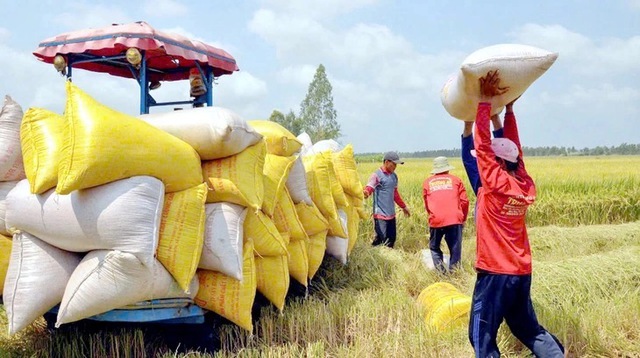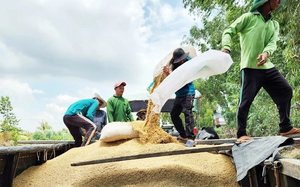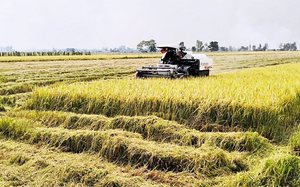
The Philippines is expected to extend its rice import suspension, raising concerns among Vietnamese exporters about record stockpiles. Photo: T.L.
According to the Philippine Department of Agriculture, the country will extend its temporary suspension of rice imports by at least 30 more days beyond the September-October period to protect local farmers, whose paddy prices have plunged sharply during the peak harvest season.
Rice imports are expected to reopen briefly in January 2026 for about 300,000 metric tons, followed by another three-month suspension from February to April to help stabilize domestic farmgate prices.
Currently, paddy prices in many areas have fallen to around six pesos (US$0.1) per kilogram, less than half of the 14-17 pesos ($0.2-0.3) per kilogram recorded at the start of the season.
In response, the Philippine government is conducting emergency rice purchases, expanding storage facilities through the country’s National Food Authority (NFA), and enforcing nationwide floor prices to prevent further declines.
The agriculture ministry is also considering raising import tariffs and banning state agencies from buying imported rice, signaling a policy shift toward self-sufficiency rather than heavy import dependence.
As of September 1 this year, the Philippines’ rice stockpile reached 2.07 million metric tons, up nearly 25 percent year on year, thanks mainly to increased household and NFA reserves.
Manila’s decision to extend the import ban has rattled the global rice market, given the Philippines’ dominant role in world demand.
Any policy change by the country tends to ripple through the entire supply chain, including major exporters like Vietnam.
Data from the Vietnam Food Association show Vietnamese five-percent broken fragrant rice is currently priced at $450 per metric ton, Jasmine rice at $490 per metric ton, and 100-percent broken rice down slightly to $310-314 per metric ton.
However, the Vietnam Food Association warned that Vietnam faces significant downward pressure ahead, as the country enters its winter-spring harvest, the largest of the year, while export outlets remain uncertain.
Last month, Vietnam’s rice exports dropped sharply due to the Philippine suspension, totaling only 466,800 metric tons worth $232 million, down 43 percent in volume and 55 percent in value from a year earlier.
During the first nine months of 2025, Vietnam exported 6.83 million metric tons of rice, earning $3.49 billion, down two percent in volume and nearly 20 percent in value, with an average export price of $509 per metric ton, among the lowest in recent years.
Meanwhile, Ghana unexpectedly overtook the Philippines to become Vietnam’s largest rice importer, accounting for 22 percent of the Southeast Asian country's total exports, followed by Ivory Coast (21 percent) and Malaysia (10 percent).
Industry experts warn that if the Philippine import ban remains in place through late 2025, Vietnamese rice prices may fall further, especially during the peak harvest early next year.




Max: 1500 characters
There are no comments yet. Be the first to comment.